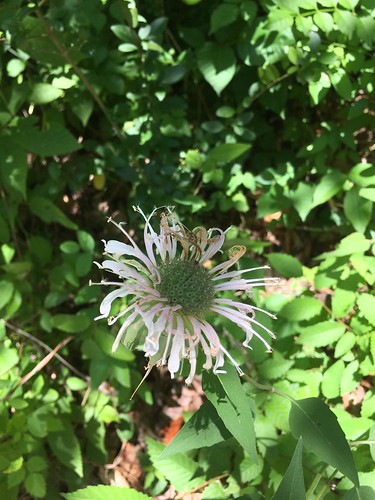

Bee balm can grow in dry soil and is less likely to be invasive in dry soil. Watering: Bee balm needs moderate water water plants just when the soil starts to dry out.It attracts butterflies, bees, and hummingbirds. Companion planting: Bee balm is said to enhance the growth of tomatoes and peppers.How much to plant: Grow 6 bee balm plants for tea or preserving.A clump may need two square feet or more. Bee balm grows in clumps and spreads rapidly. Spacing: Space plants 12 inches apart.Planting depth: Sow seed ¼ to ½ inch deep.
 Outdoor planting time: Start bee balm seed outdoors in mid-spring after all danger of frost has passed. Transplant seedlings or rooted cuttings outdoors in late spring. Transplanting to the garden: Transplant well-rooted bee balm plants to the garden one week before the last spring frost. Keep the seed starting mix at 55☏ or thereabouts. Start seeds in flats or pots under fluorescent lights. Seed starting indoors: Start bee balm seeds indoors 8 weeks before the last spring frost. Prepare planting beds by adding a couple of inches of aged compost or commercial organic planting mix to the planting bed and turning it under.įlowers of bee balm, Monarda didyma When to plant monarda–bee balm Soil preparation: Plant bee balm in moist but well-drained soil rich in organic matter. Plant where there is good air circulation to prevent powdery mildew which can hit leaves in late summer.
Outdoor planting time: Start bee balm seed outdoors in mid-spring after all danger of frost has passed. Transplant seedlings or rooted cuttings outdoors in late spring. Transplanting to the garden: Transplant well-rooted bee balm plants to the garden one week before the last spring frost. Keep the seed starting mix at 55☏ or thereabouts. Start seeds in flats or pots under fluorescent lights. Seed starting indoors: Start bee balm seeds indoors 8 weeks before the last spring frost. Prepare planting beds by adding a couple of inches of aged compost or commercial organic planting mix to the planting bed and turning it under.įlowers of bee balm, Monarda didyma When to plant monarda–bee balm Soil preparation: Plant bee balm in moist but well-drained soil rich in organic matter. Plant where there is good air circulation to prevent powdery mildew which can hit leaves in late summer. #Monarda fistulosa full#
Best location: Bee balm prefers partial shade but tolerates full sun.Preserving and storing monarda–bee balm.






 0 kommentar(er)
0 kommentar(er)
